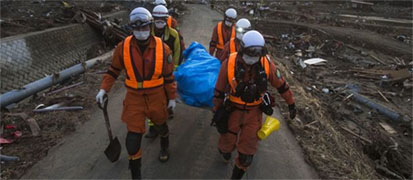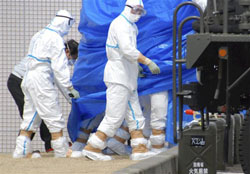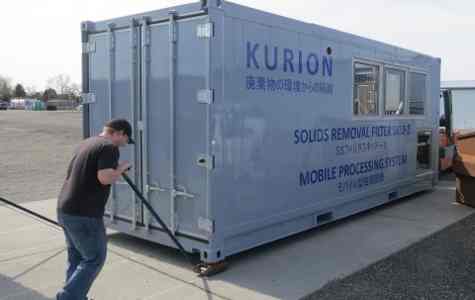Witness Disaster in Japan with National Geographic
The world watched in horror on March 11, 2011, as the fourth largest earthquake ever recorded crippled Japan and triggered a massive tsunami that swallowed entire communities, leaving unprecedented catastrophe in its wake.
All the while, amateur videographers, news crews, tourists and countless others were recording the sights and sounds of the unfolding chaos. From the producers of the special Witness Katrina, NGC (National Geographic Channel) now presents Witness: Disaster in Japan, a firsthand look at the tragedy, through the eyes of those who experienced it.
[ Also Read: Tennis Stars Raise Funds for Japan Disaster Relief ]Premiering on Wednesday, April 13, 2011, at 10 p.m. ET/PT, just over a month after the disaster occurred, Witness: Disaster in Japan weaves together an array of video sources — some rarely seen, and others shown in more depth — to build a comprehensive one-hour special that exemplifies the sheer magnitude of the disaster in chronological order, starting with the earthquake’s first tremor through the devastation caused by the tsunami.
[ Also Read: Honeywell Opens School in Quake-Hit Haiti ]Dramatic video accounts document the progression and increasing impact of the 9.0 magnitude earthquake. During the small rumblings and first earthquake warnings, we see video of residents around Tokyo remaining calm.
But as the earthquake’s intensity builds, panic spreads — ceilings collapse at shopping centers and grocery stores, the ground cracks, water mains break beneath neighborhoods, industrial smokestacks and skyscrapers precariously sway and people scramble out of their homes to find safety.
[ Also Read: Impact of Japan Earthquake on Nokia Business ]After recording several minutes of the shaking, a young American turns the camera on himself, admitting, “I’m underneath a desk and I’m f’ing scared.”
Meanwhile, sirens alert Japan’s coastal regions of the impending tsunami. Then, a mere 30 minutes after the earthquake, a massive tsunami engulfs the coast.
[ Also Read: Wanted: Facebook Gamers for Japan Disaster Relief ]From mountainsides and parking garages, survivors use their phones and video cameras to document the horror as it’s happening, while helicopters follow the sweeping wave as it destroys almost everything in its path. Handheld video captures the massive wave as people desperately try to get to higher ground.
The immediate destruction is captured throughout the region, from the airport in Sendai to the small town of Otsuchi to the city of Asahi. Houses topple like playing cards; cars are washed away like ants. The sheer destruction is unbelievable, and the immediate reactions of panic, terror and disbelief are captured as the moments unfold, explains the National Geographic Channel.
[ Also Read: Is Drinking Water Safe in Pennsylvania? ]Witness: Disaster in Japan also captures the immediate aftermath in all its epic human complexity — raw images of fear, grief and hope as the search for survivors begins.
Witness an American working with a Japanese woman who doesn’t speak English as they attempt to help those stranded, floating in the harbor, and experience the pain of a woman sifting through debris to find her family.
Photo courtesy: National Geographic






National Geographic, you have absolutely done the most impressive work, on the Japan Earthquake and Tsunami Show. I was RIVITED to it.
I live in Anchorage, Alaska, and am making preparations for my home, and myself. We went through “The Big One” in 1964. It was not fun…….
The saddness that I felt for the sheer terror these human beings suffered was just almost
too much to watch.
The national news didn’t even touch the story that you told to us. I give you an A+ and the national news a C minus.
Thank you so much for opening not only my eyes, but the eyes of countless other people in this beautiful world.
Thank you again, National Geographic.